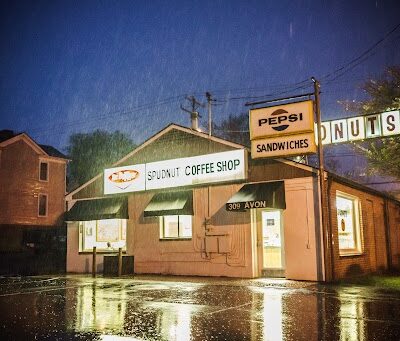About a year ago, if you asked Adam Smith or Jon Bray of The Invisible Hand if their other band, Truman Sparks, was still together, it was impossible to get a straight answer out of them. One would say it was on hiatus, the other would say it was over, and then each would repeat the other’s answer, only to finally claim they didn’t know who had changed the band’s MySpace picture to a gravestone, emblazoned with “R.I.P.”
|
It’s the time of the Four Seasons! Nab a copy of the excellent new EP by The Invisible Hand. |
Now that we know the answer (the page now reads, “[t]he remaining member is through with music altogether”), The Invisible Hand has delivered an EP that renders the question hardly worth asking. It is 15 minutes of music that’s accessible and dense enough to reward—but not to demand—repeated listening. Here, that’s a good thing. Where Truman Sparks’ greatest flaw was its inability or unwillingness to dwell on its hooks, favoring instead endless (and often amazing) pyrotechnics, Invisible Hand prizes pop over prog while retaining the density of composition that made Truman Sparks such an exciting group.
The EP’s best moments show Smith at his most ephemeral, where familiar melodies wander so long as to feel alien. Most exciting is when these melodies wander elsewhere, then return retrofitted to a new effect, as they do on the EP’s better, albeit more oddly-titled, tracks, “Salad” and “Aubade.” The other two songs, “Black Tie Formal” and “Four Seasons,” are college rock romps, less solemn and haughty than their titles suggest. It feels like getting kicked in The Shins. (Ha ha.)
The Invisible Hand is a local supergroup of sorts, and each song and each odd flourish serves as a reminder that the whole is greater than the sum of its parts. Adam Brock’s drums, which he bangs occasionally for The Nice Jenkins, rarely loaf through a nuance, and Thomas Dean’s carousing bass work, otherwise reserved for Order, reminds us that while playing that instrument is said to be easy, doing it well is anything but. Of course, much of the lively chaos comes from the Smith/Bray axe dialogue, another fortunate holdover from the Truman Sparks era, which is often so bizarre yet so locked in as to seem the work of a single, unhinged mind.
The slipshod artwork—a cardboard digipack printed with handcut letters and black clouds—reveals the project as a labor of love, completed in spite of financial and technological limitations. But the homespun production (it was recorded in Brock’s Woolen Mills basement) is part of the EP’s charm; along with Smith’s yelp, it brings to mind Of Montreal, sans glitz. The execution also reminds us of that other Charlottesville music story—not the one about vertical integration, but the one about Pavement, Silver Jews and early Jagjaguwar, the one that begins with friends coming together to stage endearing cultural oddities here, and ends with people adoring it elsewhere.






